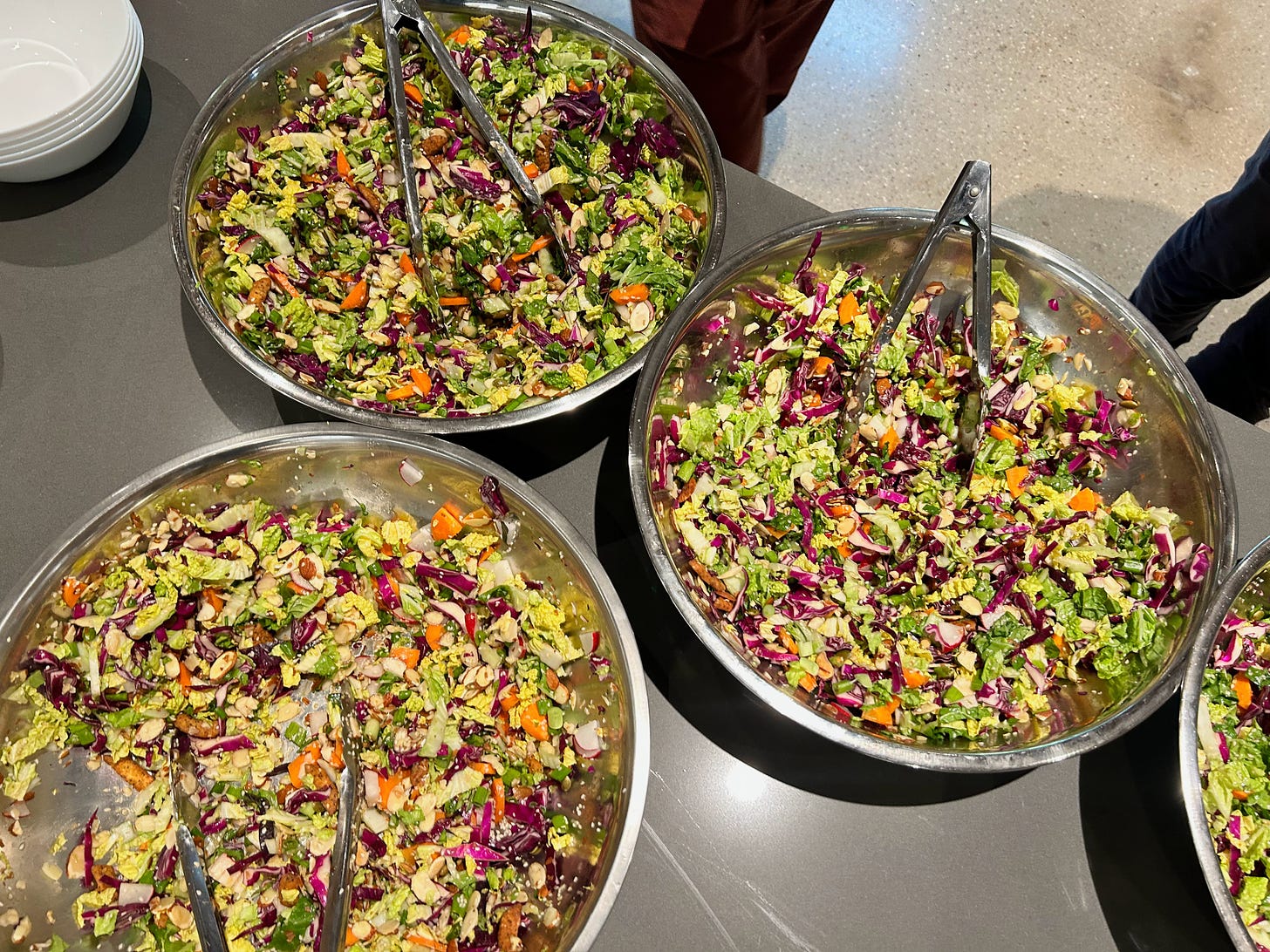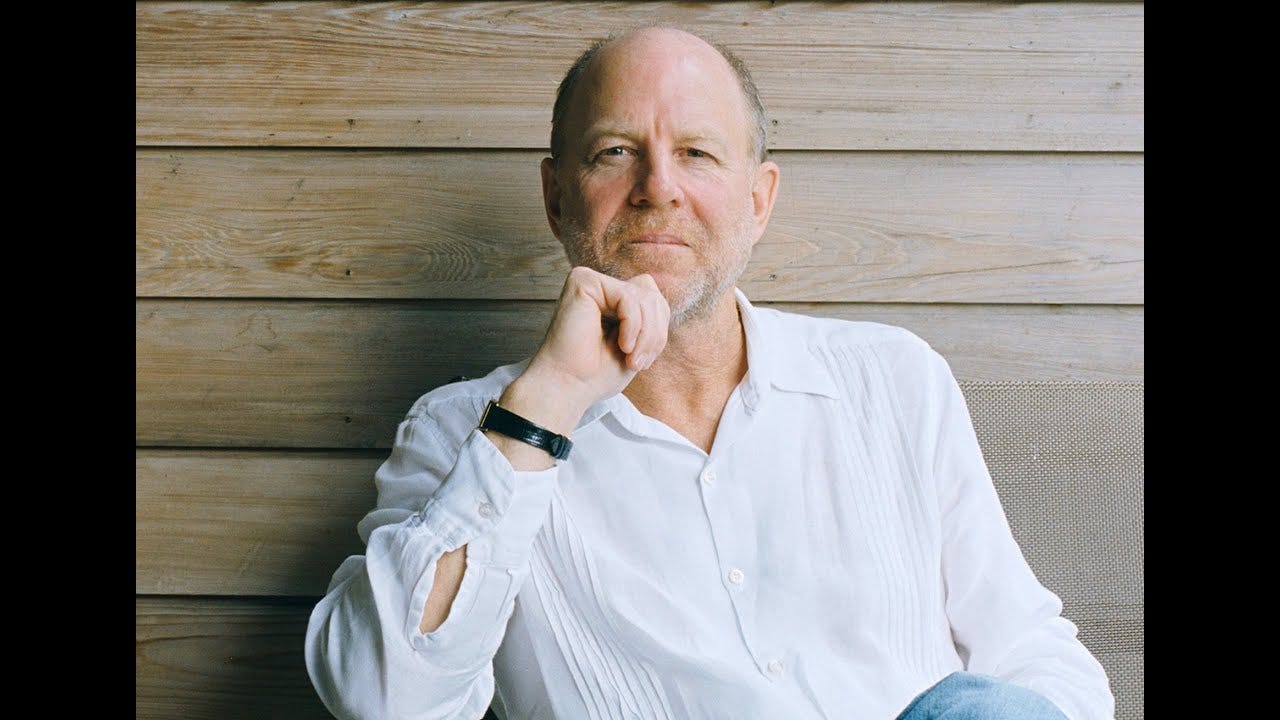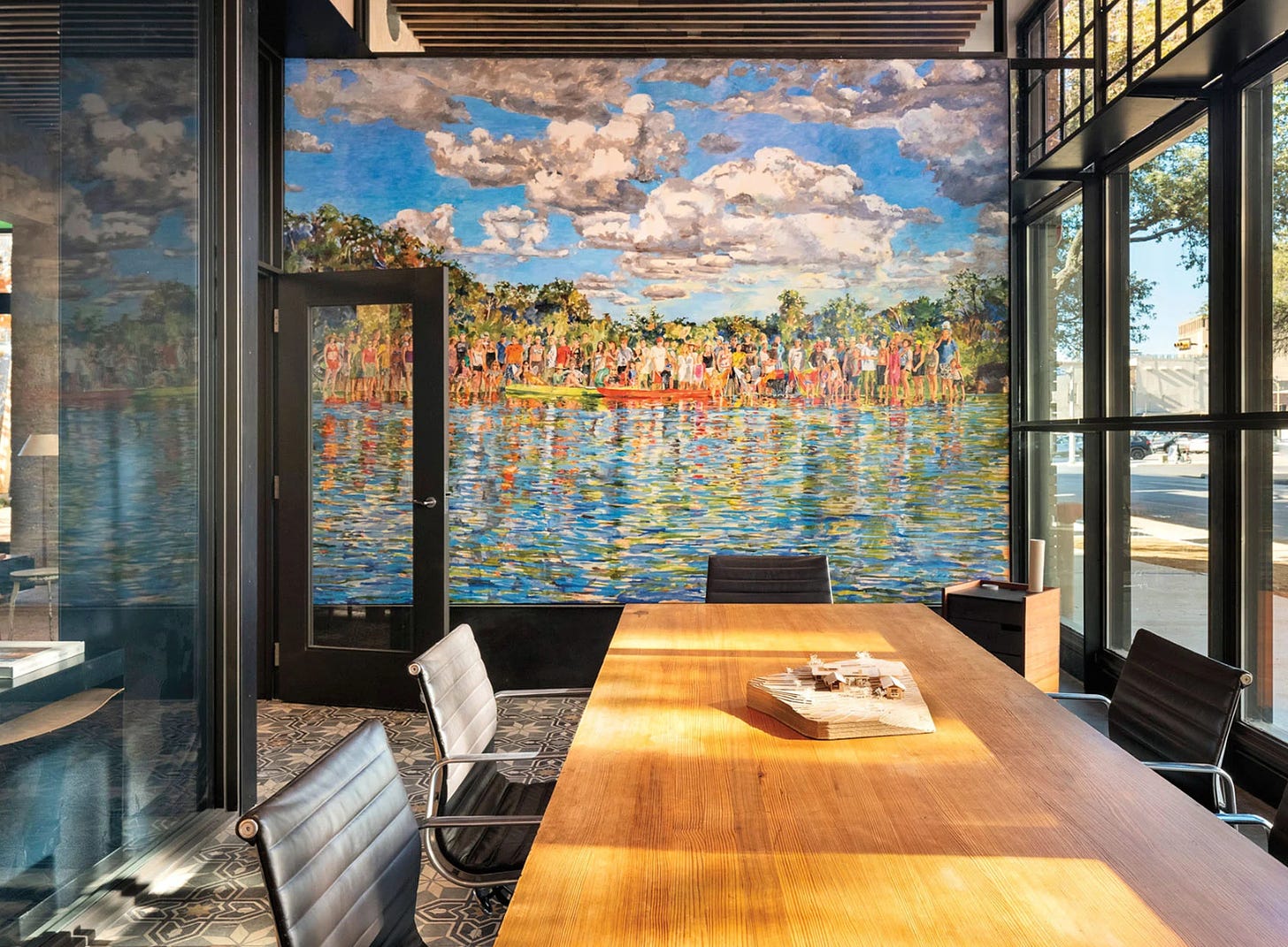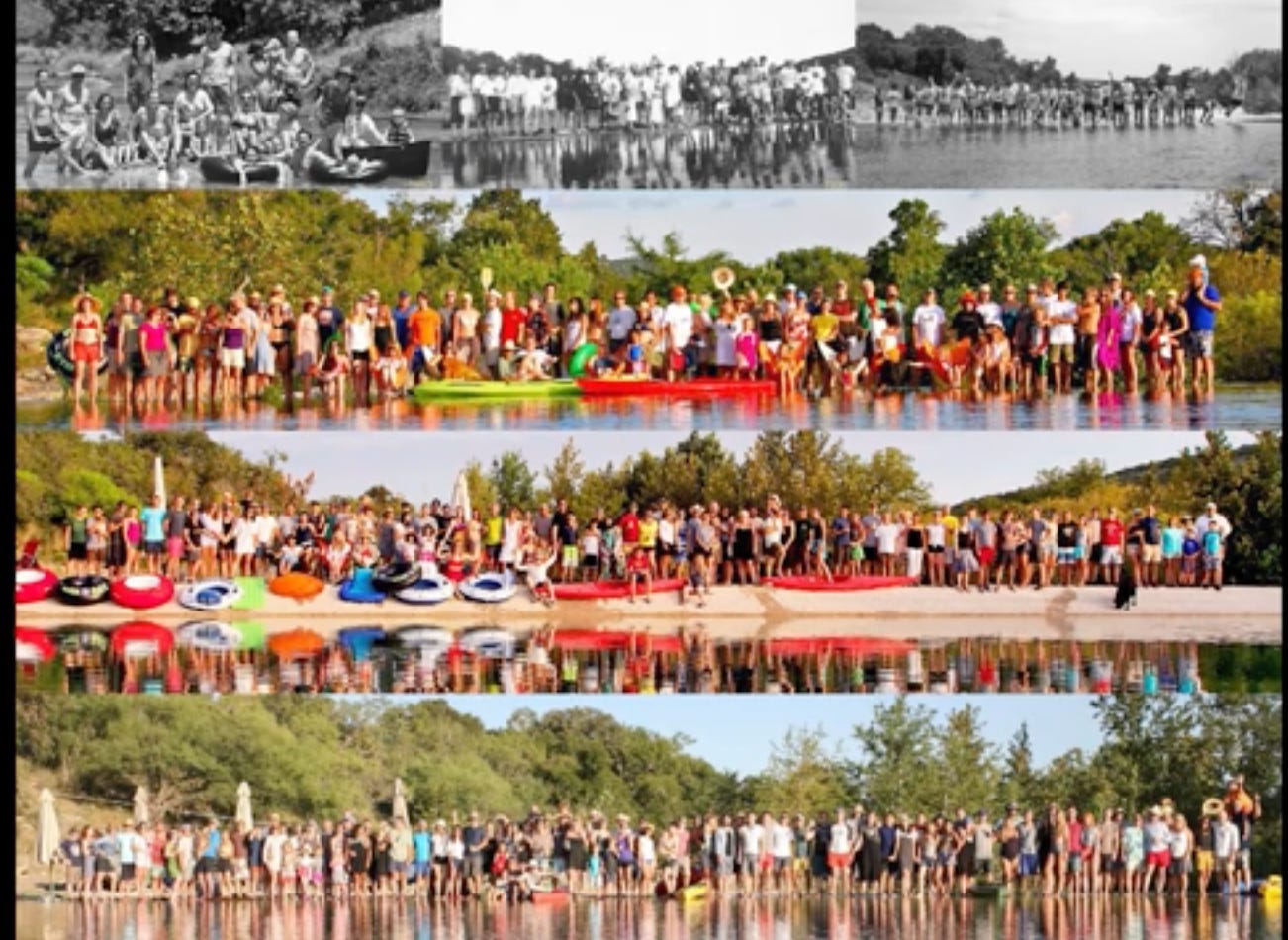How do you weave ancestry into a workplace?
'Work family' takes on new meaning at Lake|Flato's new San Antonio headquarters.
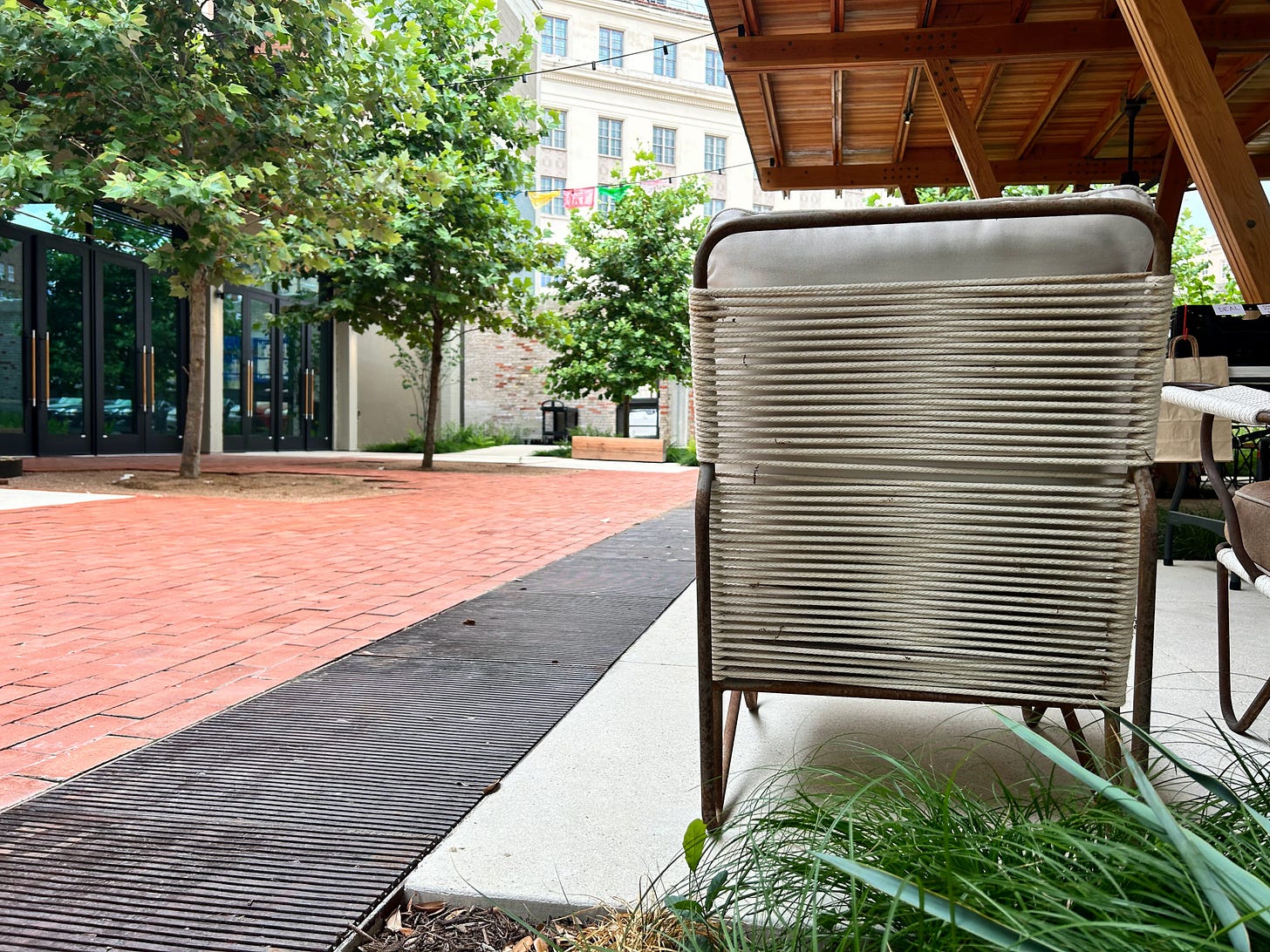
Wednesday is salad day at Lake|Flato in San Antonio.
I recently wrote for Metropolis magazine about this architecture firm — known around the country for its mixed-use, commercial and residential projects — that has totally renovated its headquarters.
The assignment was to go to the offices that are housed in an old car dealership, just a few blocks from the Alamo, and see how they’ve designed a post-pandemic workplace the accommodates modern workers’ need.
The new space, which opened earlier this year, has a huge centralized kitchen where, each Wednesday, staffers collaborate on a shared meal using farm-fresh produce being sold at a weekly pop-up produce market in the courtyard. (The market is a passion project operated by parents of one of the architects. They were so happy to be there; it was so cute.)
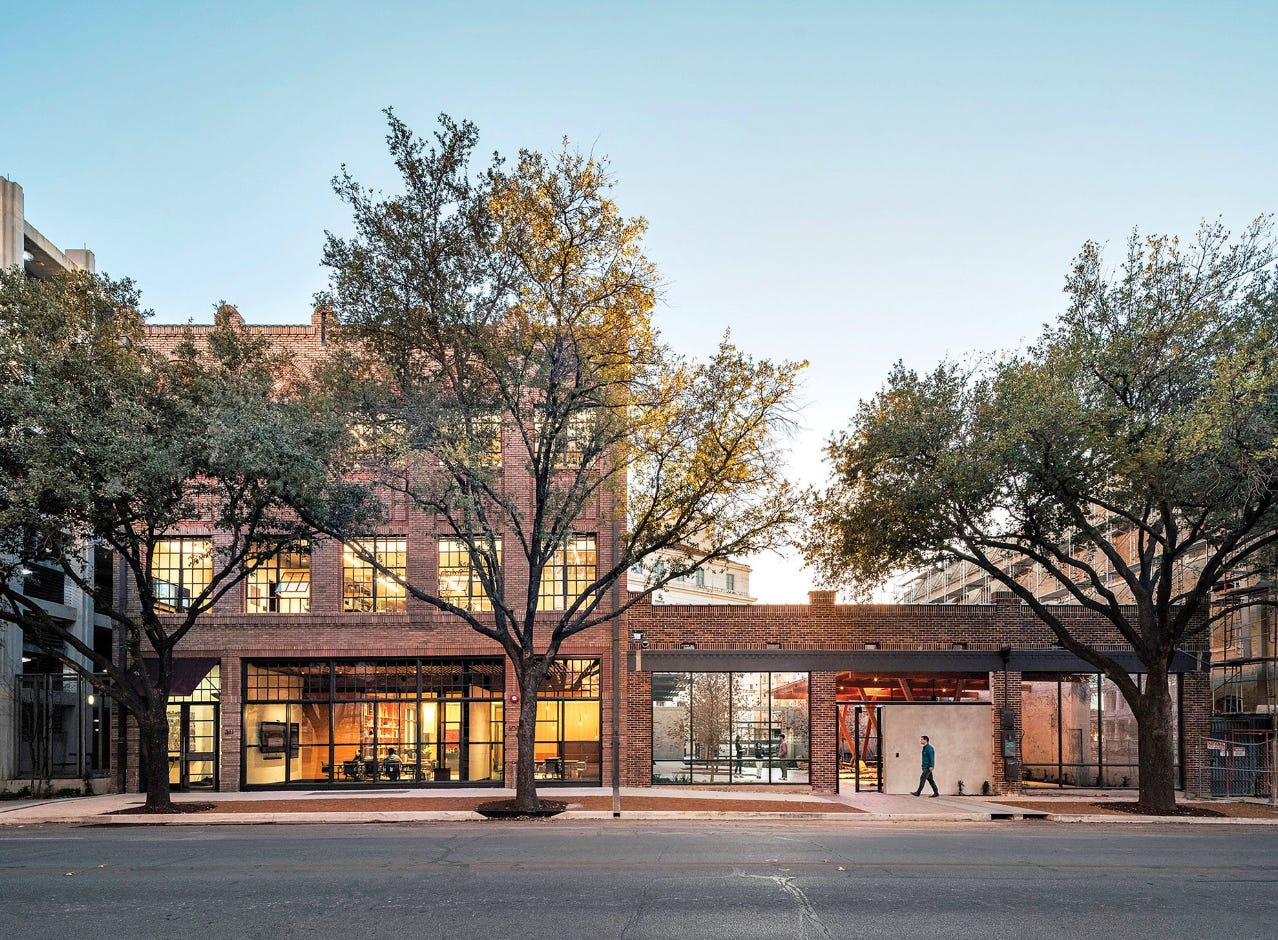
This building is where, in 1984, architects Ted Flato and David Lake rented enough space for a few desks on the second floor to start their now famed firm.
Over the years, the office evolved into a fairly traditional workspace, where the bosses had big offices with doors and everyone else had desks full of tchotchkes. They all ate lunches at the desk or at one of the restaurants nearby.
They’d been planning on renovating the headquarters for a few years before the pandemic, but as soon as it became apparent that they would be home for longer than anyone expected, they committed to a total overhaul.
They spent months interviewing employees about what they wanted and didn’t want in the new headquarters. They knew they’d need private space for all the Zoom calls they were now taking with clients. They also made the somewhat radical decision to eliminate assigned desks for nearly every employee. (Several folks in finance have designated spaces because they keep more files than other staffers.)
The architects — Flato — reserve desks through an online system, according to when they’ll be in the office. He’s requiring staff to come back to headquarters for about half the week, but the goal is to make the office a place where people can’t stay away.
That’s where lunch comes in. And classes and events, but let’s start with lunch.
Around lunchtime each Wednesday, team members start wandering downstairs to see what’s on the menu. The day I was there in early June, it was pork tenderloin — seared on a grill in the courtyard — with a cabbage, radish and carrot slaw tossed in and a cilantro lime vinaigrette, all prepared by these architects and designers, who rotate food duties.
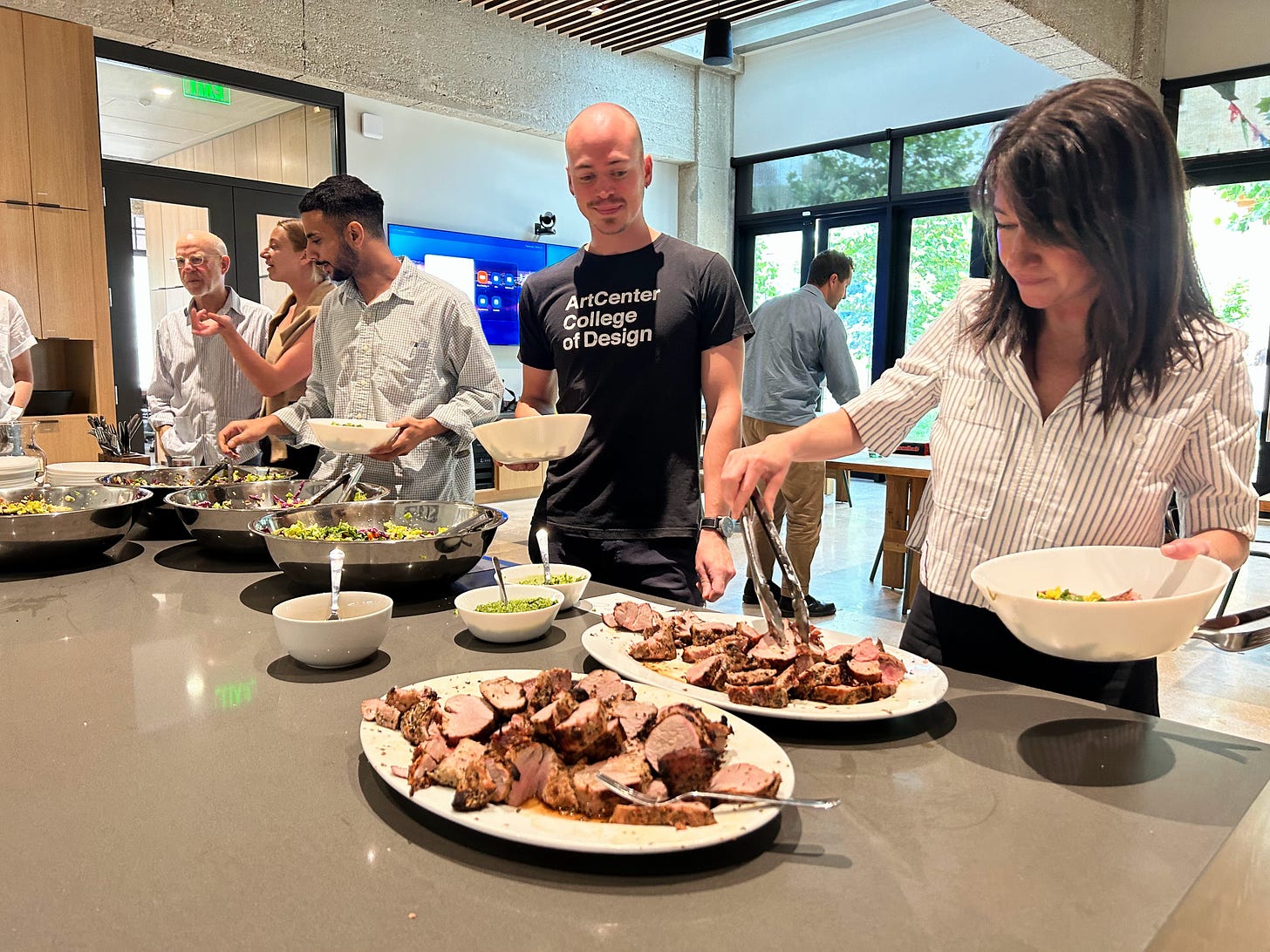
Over lunch, I chatted with Flato and the project leaders about the design elements of the building, as well as the changes they’ve made to reinforce the importance of togetherness at work.
Flato said that the pandemic ended up being the best kind of a challenge because “it forced us to come up with ways to make coming to the office even more enticing,” he said.
We were eating in what was once a tiny parking lot, where employees used to squeeze in their cars, that is now an open-air gathering space, where they also have yoga classes, public events and other get-togethers that foster creativity, connectedness and well-being.
Project manager Jamie Sartory told me that the no-assigned-deck thing means that you aren’t sitting next to the same people every day, so both new and established staff members are interacting in new ways, which has absolutely revived the creative energy of the entire team.
Even though everyone still has a full remote office set-up at home, the headquarters has become where they want to gather; not where they have to.
One of the highlights of the new space is in a conference room on the first floor with a big window facing the street. That’s where you’ll find a mural by Flato’s artist sister, Malou, who created a painting inspired by a group photo from Flake|Lato, the annual retreat the team takes to Ted’s family ranch on the headwaters of the Nueces River, about 120 miles west of San Antonio.
The retreat, which is also open to employees’ family members, has been going on for more than a decade, and in one of the drawers, you’ll find all the photos from the retreat, where you can see the same faces changing from year to year.
It was really moving to see this sense of “family” so prominently displayed in a workplace.
Creating a sense of a “work family” — much less one that has a sense of ancestry — is a controversial idea these days. We, rightfully, have this idea that work should be separate from home, which I don’t disagree with. We also know that many workplaces, like many families, are dysfunctional at heart, and so managers pushing close bonds with the people who work for them with is simply a ploy to get them to work more.
Keep reading with a 7-day free trial
Subscribe to The Feminist Kitchen to keep reading this post and get 7 days of free access to the full post archives.



